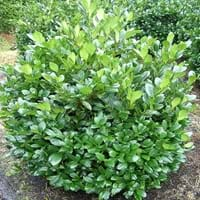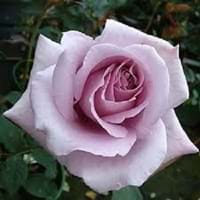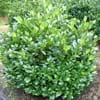Life Span
Perennial
Perennial
Type
Broadleaf Evergreen
Perennial
Origin
Eastern Europe, Western Asia
Hybrid origin
Types
Castlewellan, Otto Luyken, Schipkaensis
Crystal Imperial , Double Delight , Elina , Precious Platinum
Habitat
Lowland evergreen rainforest
All sorts of environments
USDA Hardiness Zone
6-9
6-9
AHS Heat Zone
Not Available
9-1
Sunset Zone
21,22
4, 5, 6, 7, 8, 9, 10, 11, 12, 13, 14, 15, 16, 17, 18, 19, 20, 21, 22, 23, 24
Habit
Spreading
Upright/Erect
Flower Color
White
Baby Pink, Black, Blue, Blue Violet, Creamy Yellow, Dark Blue, Deep Pink, Deep Red, Lavender, Light Yellow, Lilac, Not Available, Pale White, Pale Yellow, Purple, Red
Flower Color Modifier
Bicolor
Multi-Color
Fruit Color
Black
Non Fruiting Plant
Leaf Color in Spring
Dark Green
Not Available
Leaf Color in Summer
Dark Green
Not Available
Leaf Color in Fall
Dark Green
Not Available
Leaf Color in Winter
Dark Green
Light Green
Leaf Shape
broad, flat
Pinnate
Plant Season
Spring, Summer, Fall, Winter
Summer, Fall
Sunlight
Full Sun, Partial Sun, Partial shade, Full Shade
Full Sun, Partial Sun
Growth Rate
Medium
Medium
Type of Soil
Clay, Loam
Loam, Sand
The pH of Soil
Acidic, Neutral
Acidic, Neutral
Soil Drainage
Well drained
Well drained
Bloom Time
Spring
Summer, Late Summer, Early Fall, Fall, Late Fall
Tolerances
Drought, Salt
Drought
Where to Plant?
Ground
Ground, Pot
How to Plant?
Softwood cuttings
Cuttings, Grafting
Plant Maintenance
Medium
Medium
Watering Requirements
Keep the Soil well drained, Provide sufficient water to saturate the root zone, Use Mulches to help prevent water loss during hot and windy weather
Do not water the foliage, Water during dry weather
In Summer
Lots of watering
Lots of watering
In Spring
Moderate
Moderate
In Winter
Average Water
Average Water
Soil pH
Acidic, Neutral
Acidic, Neutral
Soil Type
Clay, Loam
Loam, Sand
Soil Drainage Capacity
Well drained
Well drained
Sun Exposure
Full Sun, Partial Sun, Partial shade, Full Shade
Full Sun, Partial Sun
Pruning
Remove damaged leaves, Remove dead branches, Remove dead leaves
Prune in the late winter or spring, Remove damaged leaves, Remove dead branches, Remove dead leaves
Fertilizers
All-Purpose Liquid Fertilizer
10-10-10, All-Purpose Liquid Fertilizer
Pests and Diseases
Red blotch
Aphids, dieback, Leaf rust, Powdery mildew, rose leaf-rolling sawfly
Plant Tolerance
Drought
Drought
Flower Petal Number
Single
Not Available
Foliage Texture
Medium
Coarse
Foliage Sheen
Glossy
Matte
Attracts
Bees, Birds, Insects
Bees, Butterflies, Hummingbirds, Not Available, pollinators
Allergy
Not Available
Pollen
Aesthetic Uses
Informal Hedge
along a porch, deck or patio, Beautification, Bouquets, Cottage Garden, Ornamental use, Showy Purposes, Wild gardens
Beauty Benefits
Not Available
Not Available
Environmental Uses
Air purification
Air purification
Medicinal Uses
Eye Infection, Nausia, Vomiting
Vitamin C
Part of Plant Used
extracted oil
stalk
Other Uses
Dried heads are used in floristry
Beneficial species for attracting pollinators, Edible syrup, Making Shampoo, Oil is used for aromatherapy, Oil is used in perfume, soaps, creams, etc., Use in Chinese herbology, Used as Ornamental plant
Used As Indoor Plant
No
No
Used As Outdoor Plant
Yes
Yes
Garden Design
Foundation, Hedges, Mixed Border
Cutflower, Feature Plant, Foundation, Mixed Border, Topiary / Bonsai / Espalier
Botanical Name
PRUNUS laurocerasus 'Otto Luyken'
ROSA 'Americana'
Common Name
cherry laurel, common laurel
Americana Hybrid Tea Rose, Hybrid Tea Rose
In Hindi
English laurel
संकर चाय गुलाब
In German
Lorbeerkirsche
Teehybride
In French
Laurier-cerise
Hybride de thé
In Spanish
Prunus laurocerasus
Híbrido de té
In Greek
Prunus laurocerasus
Hybrid tea rose
In Portuguese
Prunus laurocerasus
Hybrid tea rose
In Polish
Laurowiśnia wschodnia
Hybrid tea rose
In Latin
Prunus padus
Hybrid tea rose
Phylum
Tracheophyta
Magnoliophyta
Class
Magnoliopsida
Magnoliopsida
Clade
Angiosperms, Eudicots, Rosids
Angiosperms, Eudicots, Rosids
Tribe
Not Available
Not Available
Subfamily
Not Available
Rosoideae
Number of Species
Not Available
Season and Care of English Laurel and Hybrid Tea Rose
Season and care of English Laurel and Hybrid Tea Rose is important to know. While considering everything about English Laurel and Hybrid Tea Rose Care, growing season is an essential factor. English Laurel season is Spring, Summer, Fall and Winter and Hybrid Tea Rose season is Spring, Summer, Fall and Winter. The type of soil for English Laurel is Clay, Loam and for Hybrid Tea Rose is Loam, Sand while the PH of soil for English Laurel is Acidic, Neutral and for Hybrid Tea Rose is Acidic, Neutral.
English Laurel and Hybrid Tea Rose Physical Information
English Laurel and Hybrid Tea Rose physical information is very important for comparison. English Laurel height is 90.00 cm and width 180.00 cm whereas Hybrid Tea Rose height is 120.00 cm and width 60.00 cm. The color specification of English Laurel and Hybrid Tea Rose are as follows:
English Laurel flower color: White
English Laurel leaf color: Dark Green
Hybrid Tea Rose flower color: Baby Pink, Black, Blue, Blue Violet, Creamy Yellow, Dark Blue, Deep Pink, Deep Red, Lavender, Light Yellow, Lilac, Not Available, Pale White, Pale Yellow, Purple and Red
- Hybrid Tea Rose leaf color: Not Available
Care of English Laurel and Hybrid Tea Rose
Care of English Laurel and Hybrid Tea Rose include pruning, fertilizers, watering etc. English Laurel pruning is done Remove damaged leaves, Remove dead branches and Remove dead leaves and Hybrid Tea Rose pruning is done Prune in the late winter or spring, Remove damaged leaves, Remove dead branches and Remove dead leaves. In summer English Laurel needs Lots of watering and in winter, it needs Average Water. Whereas, in summer Hybrid Tea Rose needs Lots of watering and in winter, it needs Average Water.





